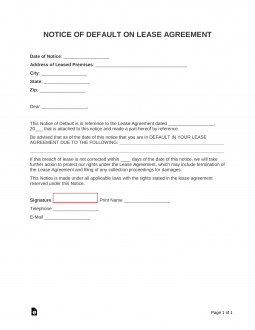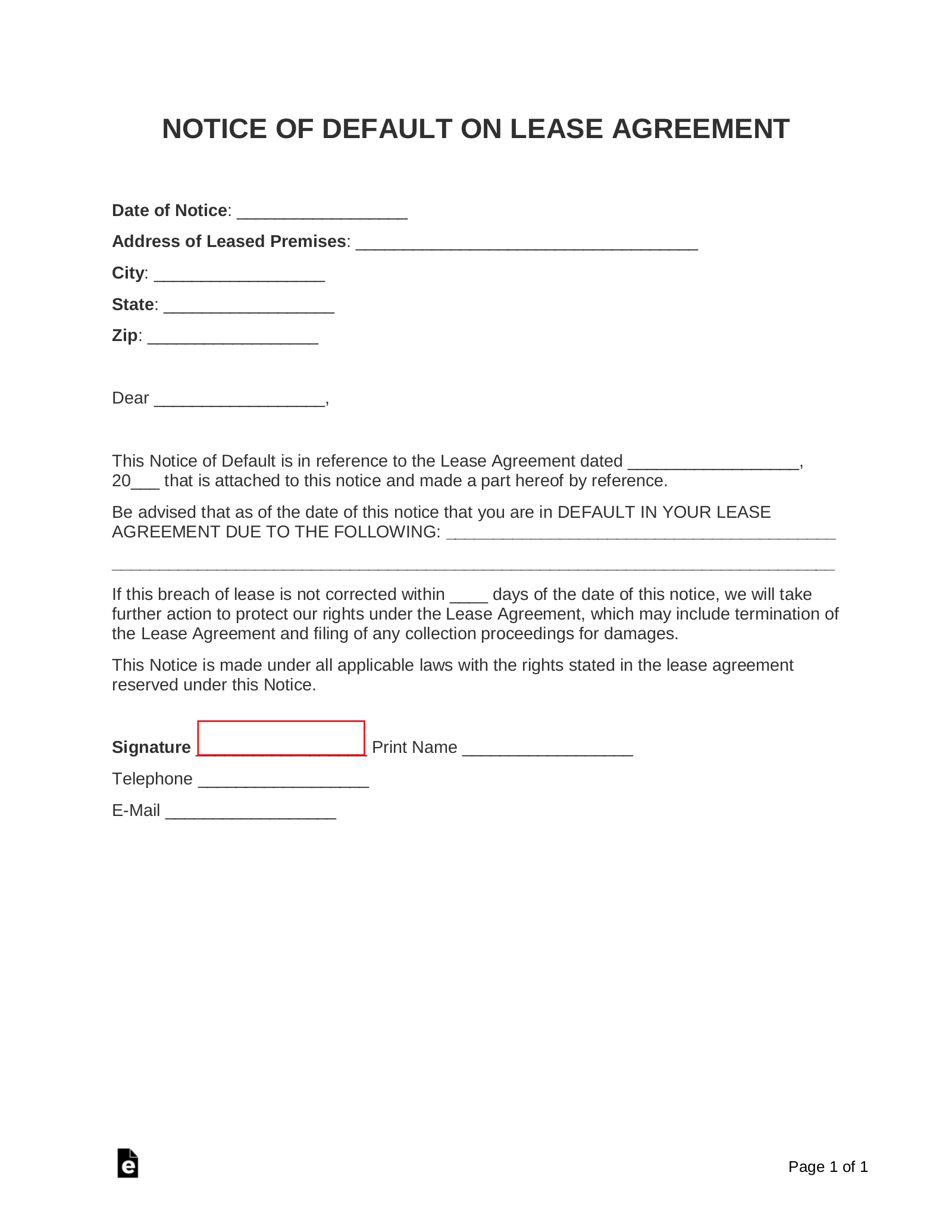Updated August 07, 2023
A Lease Default Letter is recommended for Tenants, although may be used by Landlords as well, if the other party is breaching a section or clause in their lease agreement. The reason it is recommended for Tenants is most States have laws for landlords on how to handle specific violations against the Tenant (See Eviction Notices).
After completing this letter should be sent via Certified Mail (with return receipt) as this will prove that they received the notice of default.
Default Due to Late Rent – For Landlords, the Notice to Quit for Non-Payment should be used rather than this default letter if the Tenant is late on their rent.
Default Due to Non-Compliance – For Landlords, the Notice to Quit for Non-Compliance should be used rather than this default letter of the Tenant is violating their lease.


